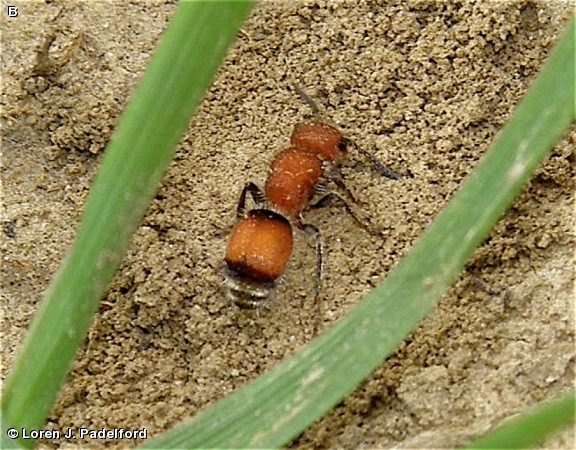
The adult female is approximately 3/8 inch or 10 mm in length and resembles a large, fuzzy red ant. The females are wingless. The eyes are small, round and black. The head, thorax and front half of the abdomen are red and sparsely covered with hair. The rear half of the abdomen is black and hairy with tan discontinuous vertical rings. Adult males are also about 3/8 inch or 10 mm in length and completely black and hairy except for the first abdominal segment which is orange. The wings are black. The legs of both sexes are dark brown or black and hairy. The antennae are black and straight. This wasp is probably Dasymutilla asopus because of the head shape and petiole. However, it is very similar to other species and cannot be positively identified from the photograph.
The frequency of occurrence of this species is currently not known, however, the female in photo A was photographed in Neale Woods in late June. Females are usually seen wandering around in sandy fields searching for nests of bees and wasps in which to lay their eggs. The female in photo B was photographed in late May on the dam in Child’s Hollow, Fontenelle Forest.
Females of this family have the most painful sting of any insect in North America. Velvet Ants are parasites of bees and wasps. There are about 8,000 species of Velvet Ants worldwide.
The content of NatureSearch is provided by dedicated volunteer Naturalists of Fontenelle Forest who strive to provide the most accurate information available. Contributors of the images retain their copyrights. The point of contact for this page is: Loren Padelford.

